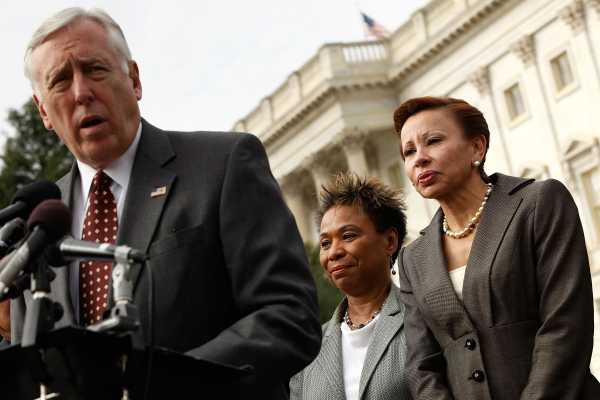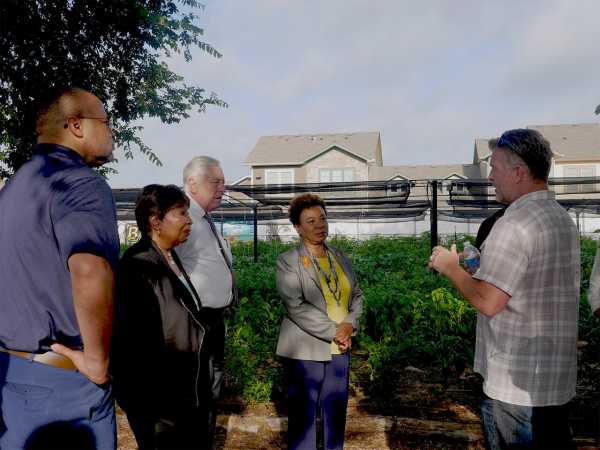
Coming off a bruising 2016 election, Democrats want to let voters know they can improve the economy heading into the November midterms. There’s just one problem: By almost every measure, the economy is booming.
A rosy jobs report released late last week showed the US is at 3.8 percent unemployment, the lowest since 2000. But top Democrats say those good jobs numbers don’t tell the whole story — many Americans are still struggling.
“This [3.8 percent unemployment] masks the fact that there are folks who are not in the unemployment figures,” said House Minority Whip Steny Hoyer (D-MD) in an interview with Vox. “They dropped out; they’re not included in these numbers.”
Meanwhile, President Donald Trump and the GOP are planning to run on their massive tax cuts and a strong economy going into November. Trump is eager to talk about job growth.
But it still may not be enough to provide a boost for Republicans in the midterms. A recent poll from NBC News and the Wall Street Journal found that while voters do give Trump credit for a good economy, they also lean toward candidates who will be a check on the president. That appears to be an advantage for Democrats going into midterms.
“I don’t see this as a story where I think most people feel good about the economy,” economist Dean Baker told me. “The aggregate numbers look good, but younger people still have a lot of college debt … people aren’t confident with their prospects in retirement.”
Democrats say Republican tax cuts are hurting more than they’re helping
In 2016, Trump campaigned on a message that the economy had left behind a lot of people (specifically in the white working class). Despite the economy’s strength under both the Obama and Trump administrations, those anxieties have not disappeared in the year and a half since Trump was elected.
Now Democrats are making the economy a huge focus. House and Senate Democrats unveiled a platform that focuses largely on increasing the minimum wage, putting a dent in rising income inequality, and solving the crisis of unaffordable housing. To underscore that point, Hoyer and Rep. Barbara Lee (D-CA) recently launched a “Pathways Out of Poverty” listening tour, visiting communities around the country who are devising their own solutions for upward mobility.
They kicked off the tour at Bonton Farms in Dallas, one of the largest urban farms in the country, which employs ex-inmates and supplies much-needed food in an area that’s considered a “food desert,” where the nearest grocery store is hours away. Hoyer and Lee also visited a community center for low-income residents that sets them up with needed services.

“These programs are examples of what can be done with minimal resources, and we need to see them replicated around the country,” Lee told Vox. “We need to prioritize our investments and not allow budget cuts.”
Hoyer is using his listening tour to see which policies could become ideas for Democrats if they can take back a majority in the House in November.
“I think we will be in charge in the next Congress, but whether we’re in charge or not, I think we’ll have some legislation that we can put forward in helping assist local communities,” he said. “Tragically, the Trump administration is going in exactly the opposite direction. It passes a tax bill that gives the overwhelming 83 percent of its resources — $1.5 trillion — to the wealthiest in America.”
The economy is doing well under Trump. That still may not help his party in 2018.
Trump’s approval rating is at historic lows, but one thing he has going for him is a good economy. This is key to Trump’s message: He was elected in a wave of economic anxiety, especially in white, rural areas where manufacturing jobs had disappeared.
Questions linger over how much a strong economy can help Republicans win in the midterms. That’s because historically, the economy matters much less in a midterm than it does in a presidential year, per economist Baker.
Take, for instance, the 2006 midterms, when the economy was good pre-2008 recession and Republicans were in power. They were still swept out of office by the Democrats. The opposite thing happened in 2014, when the economy was steadily improving yet Democrats lost control of the Senate and ceded ground in the House.
“The Democrats still got killed in that election,” Baker said.
Baker and Moody’s Analytics chief economist Mark Zandi said that while jobs numbers look good, they don’t tell the whole story.
Americans all across the age spectrum are still feeling economic anxiety, whether they’re young people graduating with student loan debt or older individuals afraid they don’t have enough money to retire.
“People do have jobs, but they have serious pocketbook issues,” Zandi said. “People still have very significant and serious financial problems. From both a policy and political perspective, both parties should be focused on this, but certainly the Democratic Party.”
Most working Americans aren’t noticing a difference showing up in their paychecks from the tax bill. This is partially the design of the law — it favored corporations and the rich over ordinary working Americans.
Baker says voters are “hearing the stories that AT&T and Apple are doing $20 billion share buybacks. They’re hearing all this money going to the shareholders, and they’re not seeing it in their paycheck or in pay raises.”
While Trump rode the economic anxieties of white, working-class Americans in poor rural areas to victory in 2016, Lee and Hoyer say they are focused on communities of color as well as Rust Belt areas and rising inequality.
Zandi notes this is a good start, but added that Democrats need to convey a broad economic message to everyone in order to win in 2018.
“There are substantive pocketbook issues for people that are doing quite well,” Zandi said. “Clearly the poor have a lot of issues. … Democrats are very good at that, but their message has to broaden if they want to win.”
Sourse: vox.com






